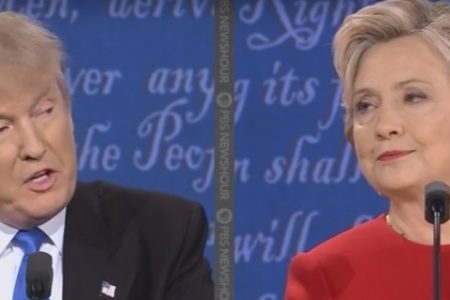How to set prejudice aside when watching a debate
The last few weeks have seen the long-anticipated debates between the Democrats’ presidential candidate Hillary Clinton and the Republican Donald Trump. The debates were very fierce and both candidates availed of every opportunity to make personal attacks.
Voter can be influenced
The aim of the debates is to provide voters with the best possible information to choose between the two candidates. There’s just one problem… Decades of psychology research suggests that the voter can be influenced by many more factors than “the best possible information”.
Tailor-made podium
The image of a politician can be influenced by his or her height, for instance: Taller men are often viewed as more competent. Dutch psychologists have recently analyzed all the U.S. presidential elections to date and found that the candidates who were taller than their opponents received a higher proportion of the popular vote and were more often reelected (though due to the indirect election system they were not always the ones that ended up winning the election). In 1976, for the debate between Gerald Ford and Jimmy Carter, the organizers chose to use lecterns of different heights to make the candidates seem equally tall. This year’s formula is to use a tailor-made podium to create a level playing field in the height stakes.
Two tips
However, voters have little say in the height of the podium, the structure of the debate, or the questions posed. All they can do is try and correct for the prejudices they themselves may have about the candidates. Here are two tips, based on insights from the field of social psychology, that you can use during and after watching the debates:
Memory or impression is not always correct
1. On election day, the vote for a particular candidate will be determined not by what he or she actually said during the debates, but by our memory and impression of what each candidate said. And this memory or impression is not always correct. For instance, we tend to remember what was said at the beginning or the end better than what was said in the middle. Moreover, our general impression is mainly influenced by the peak (the most striking or intense moment) and the end of an event. This means that less prominent or intense details do not weigh in the voter’s decision, even though they may be important information.
Tip 1 is not to simplify the debate by remembering only the highlights. When forming your opinion, try to weigh up as much information as possible, including the less striking parts.
Observations that support what we believe
2. My second tip is based on research into the confirmation bias, our tendency as human beings to be selective in the observations we expose ourselves to, preferring observations that support what we believe. If liberals only read commentaries about the debates that are written by other liberals, and conservatives only those by other conservatives, it is unlikely that they will reach an understanding of the full range of information available.
Tip 2 then, is not to be selective about what reports you read about the debates in the media.
Prejudice will always play a role, but these tips can help voters to consider the information from the debates more objectively when it comes to casting their vote.
See also in NRC (Dutch newspaper)
Twee manieren om een debat te volgen zonder vooroordelen





